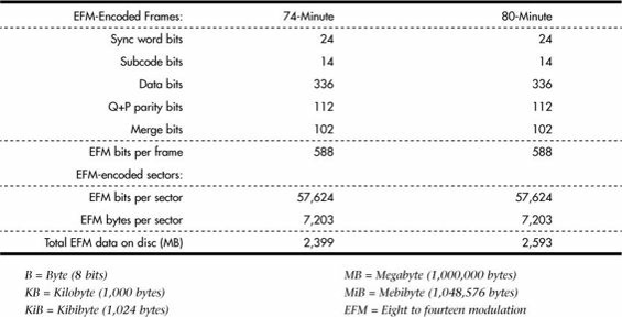Hardware Reference
In-Depth Information
information, results in about 737MB (703MiB) of actual user data.
The calculations for EFM-encoded frames and sectors are shown in
Table 11.4
.
Table 11.4. EFM-Encoded Data Calculations
To put this into perspective, see
Table 11.5
for an example of how familiar data would actually be
encoded when written to a CD. As an example, I'll use the letters
N
and
O
as they would be written
on the disc.
Table 11.5. EFM Data Encoding on a CD
Figure 11.5
shows how the encoded data would actually appear as pits and lands stamped into a CD.
Figure 11.5. EFM data physically represented as pits and lands on a CD.
The edges of the pits are translated into the binary 1 bits. As you can see, each 14-bit grouping
represents a byte of actual EFM-encoded data on the disc, and each 14-bit EFM code is separated by
three merge bits (all 0s in this example). The three pits produced by this example are 4T (4
transitions), 8T, and 4T long. The string of 1s and 0s on the top of the figure represents how the actual
data would be read; note that a 1 is read wherever a pit-to-land transition occurs. It is interesting to
note that this drawing is actually to scale, meaning the pits (raised bumps) would be about that long






